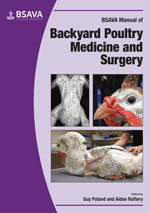
Full text loading...

Compared with other invasive techniques, endoscopy is relatively simple and easy to perform. Endoscopy is also valuable for diagnosing conditions affecting a flock, and offers an alternative to sacrificial necropsy. This chapter covers equipment, patient preparation and contraindications, evaluation of internal organs and complications of a range of endoscopic and endosurgical procedures.
Endoscopy, biopsy and endosurgery, Page 1 of 1
< Previous page | Next page > /docserver/preview/fulltext/10.22233/9781910443194/9781910443194.12-1.gif

Full text loading...

































